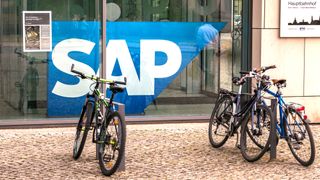Three things we learned from SAP's latest cloud growth figures
SAP hails financial success, but there are challenges ahead

SAP upped its future guidance last week on the back of impressive financial results that underlined the forward momentum of its cloud business model.
Cloud revenue grew 30% year-on-year to €1.2 billion in the German software firm's second quarter of 2018, while new cloud bookings grew 24% year-on-year, hitting €421 million, though the figures were boosted by SAP's Callidus acquisition.
Naturally, traditional license revenue dropped - by 9% - as SAP converts its on-premise customers into cloud users, falling to €996 million.
It comes on the back of SAP's belated counter to Salesforce's dominance in CRM, releasing C/4 HANA only last month to target its users - largely back-office customers - with a front-office product too.
CEO Bill McDermott hailed the results as evidence of customers embracing the vendor's "clear strategy", saying: "SAP customers are finally able to focus their entire business on delivering a personalised experience to their customers.
"The intelligent enterprise is the elixir to bridge silos inside fractured businesses and beyond so CEOs get a single view of the customer."
As a result, SAP has raised its guidance for 2020, expecting non-IFRS cloud subscriptions and support revenue of between €8.2 billion and €8.7 billion, up from previous guidance of €8 billion to €8.5 billion.
Cloud Pro Newsletter
Stay up to date with the latest news and analysis from the world of cloud computing with our twice-weekly newsletter
While the results were well-received by analysts, market observers did point to a few challenges - and opportunities - ahead for the ERP vendor, which we outline below.
Cloud is growing, but is it scaling?
While SAP's cloud growth is strong, it's harder to tell if the company is doubling down on that growth by investing in its own platform. For users deploying ERP at scale, larger, enterprise-friendly clouds like Microsoft's might appeal over SAP's, says SAP implementation specialist Centiq's CEO, Matt Lovell, who claims Microsoft has been spending $1 billion a month on expanding Azure's scale.
Similar investment in SAP's own cloud isn't clear from its balance sheet, with €5 billion in operating expenses for the quarter not suggesting that any of that is related to expanding its data centre footprint.
"SAP's got to catch up a bit," says Lovell. "Microsoft's global fabric is far more expansive and extensive and the roadmap is going to give much more benefit to [big] customers globally.
"To compete with that kind of global scale - Google's in a very similar category - in terms of locality of infrastructure, which we know to be important to lots of SAP customers ... you want to [offer] that business continuity on a global basis and [customers] want to be able to pinpoint performance pinch points and optimise the cost of cloud."
S/4 HANA continues to add customers, but what about Leonardo?
SAP was keen to boast of further adoption of its new ERP product, S/4 HANA. The suite grew its customer base 41% year-on-year, now counting 8,900 users.
"This is of significant interest," says Lovell, tempering the news with the point that S/4 migrations are complicated and mean some users will be using more of the suite than others. "Obviously they're at different stages of migration, which could take a year or more given the complexities of migrating ECC and ERP. We can expect the number to grow but that number's going to reflect more customers inside a longer journey."
But he adds that the growth will continue as new S/4 users learn best practice from those who have already deployed the suite.
Research firm TechMarketView's research director, Angela Eager, adds that 40% of the new S/4 customers are brand new SAP users - a significant win - but adds that other product lines, like innovation umbrella Leonardo, barely got a look-in: "The limited detail on HCM and the significant Leonardo products was notable."
C/4 HANA is yet to prove itself
C/4 HANA, SAP's answer to Salesforce's ever-growing market share of the CRM space, was only revealed in early June, yet according to SAP's financials is already a rollicking success, bringing in €242 million in revenue for the quarter.
Of course, C/4 packages up SAP's sidecar acquisitions - Callidus, Gigya and others - and so really the financial growth isn't off the back of a new product, but largely acquisitions.
"It seems late in the day to be launching such an initiative," says Eager. "With Salesforce still ascendant, it will be a tough market to work -- and [to] deliver the triple digit growth SAP is expecting from CRM products."
The market will instead watch closely to see how SAP's bet on CRM pays off against this baseline, with SAP aiming first to double CRM business in the next two years.




